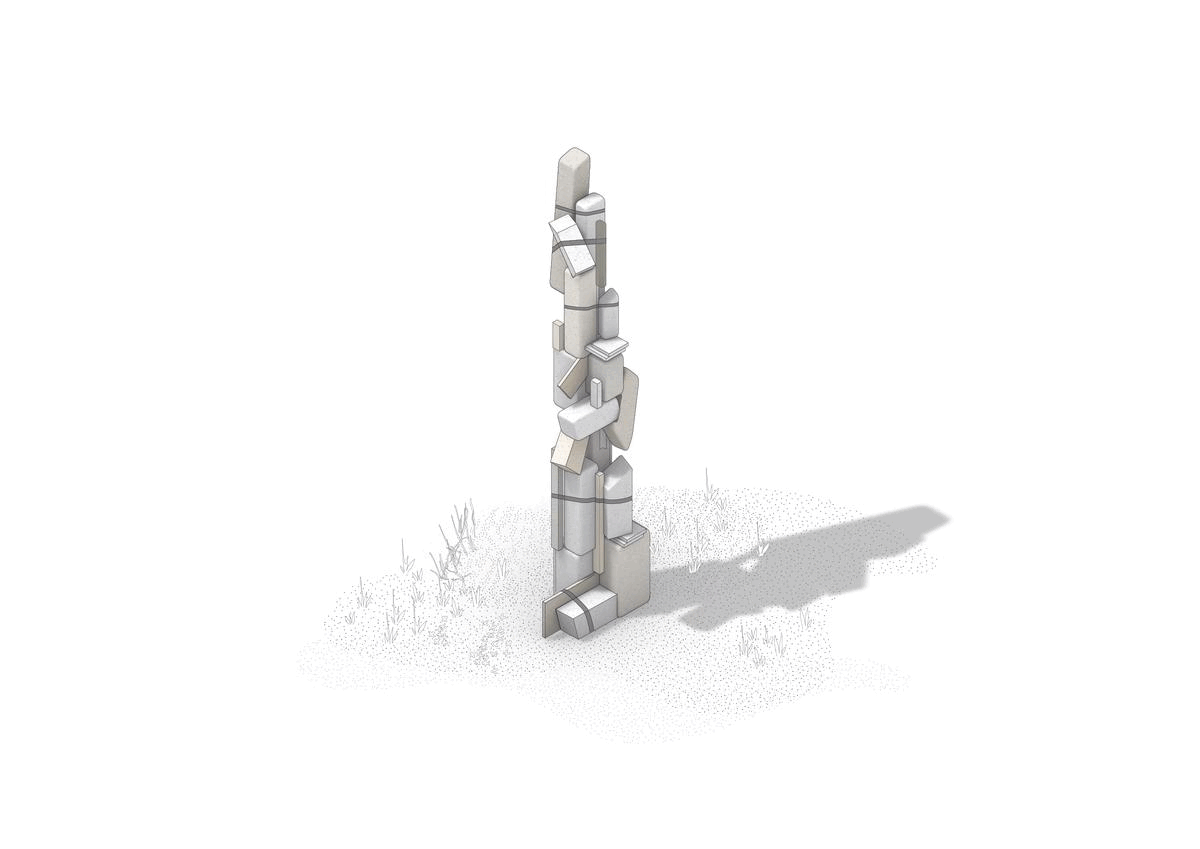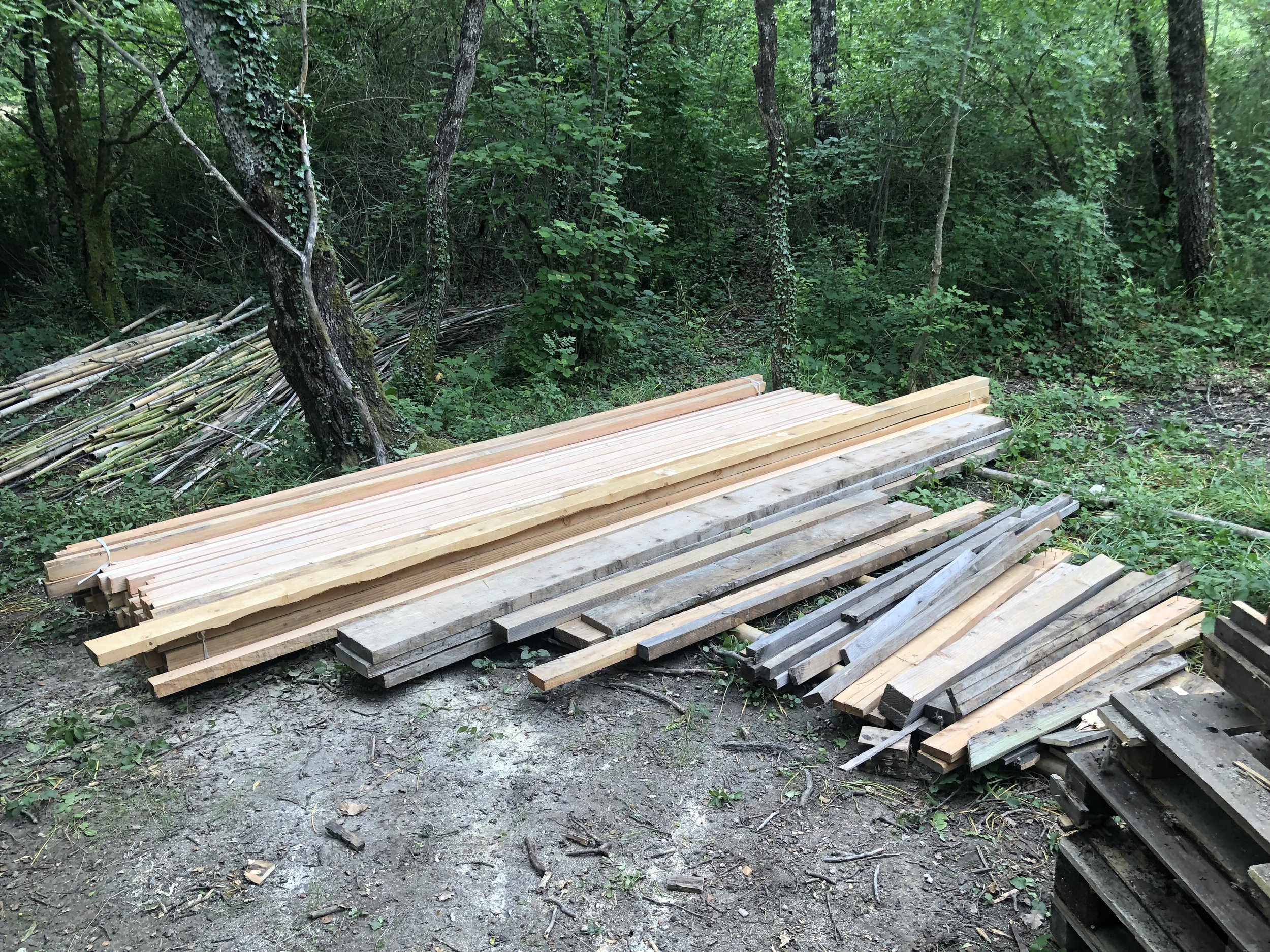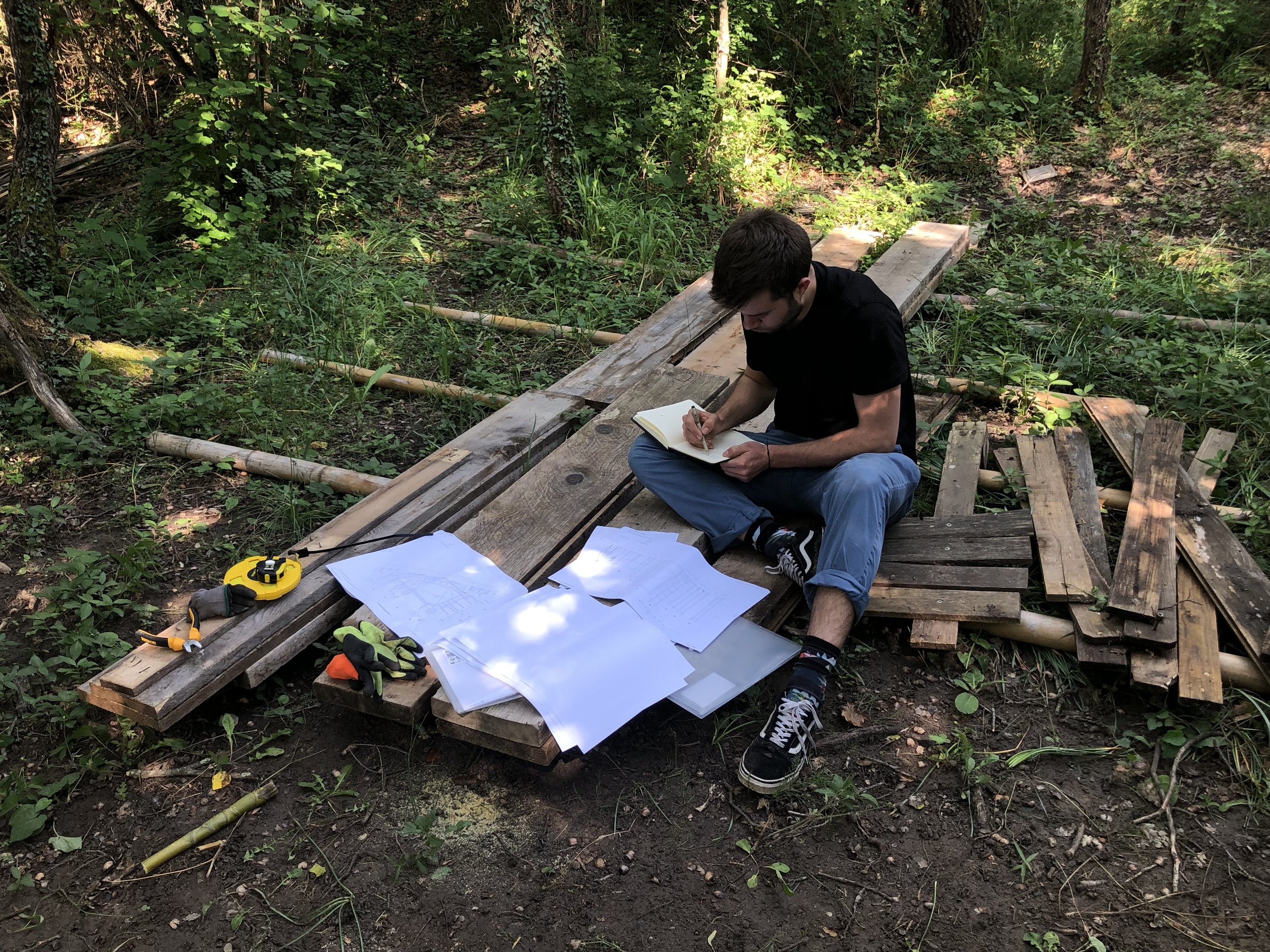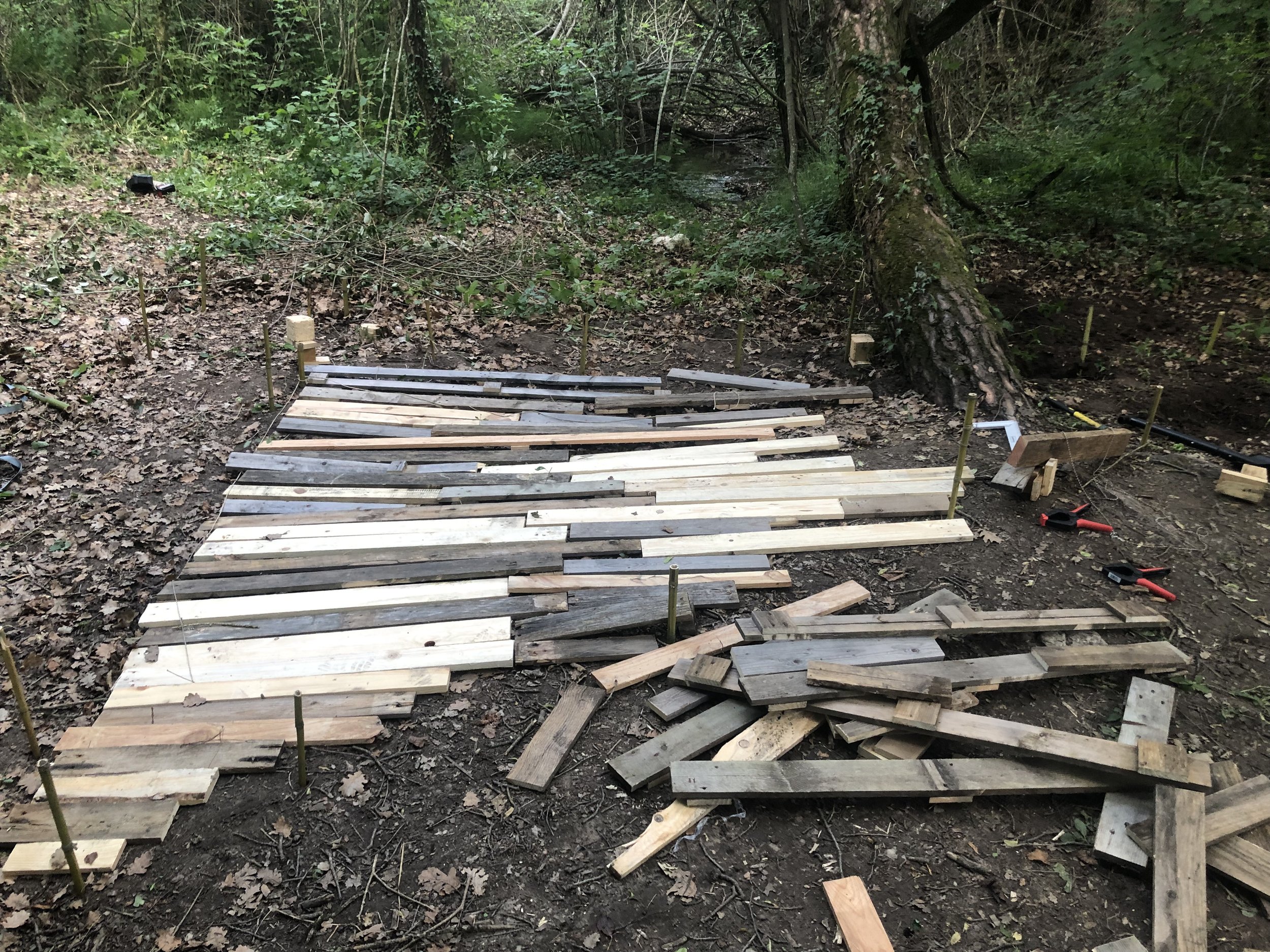The regenerative ruin
Type | Stage and Scenography Design
Year | 2023
Project Site | Aleyrac, Provence, France
The Regenerative Ruin was initiated through a collaboration with La Vallée Electrique (LVE), a music festival in Drome Provencale, in the south of France, in June 2023.
How do we combine growth with de-growth? How can Architecture as a ‘constructive’ operation deal with the necessity and urgency of reducing our impact, resting, and healing? How can we build while unbuilding?
In the context of these pressing questions, we consider Aftermath as an opportunity, leaving room for unknown forces to finalize the trajectory of our designs. The temporary nature of a music festival and the specific ecological context of LVE made this an interesting premise to explore such design practices. For example, a herd of grazing animals moving over a grassland provides vital nutrients to the soil through manure, fertilizing, and supporting plant growth. How might this analogy be extended to the Design context, where temporary human artifacts leave behind something that functions symbiotically with the ecosystem?
We were drawn to Roman and Gothic ruins intrinsic to the cultural and historical context of the territory of Provence. These fragments of previous civilizations dot the landscape and maintain a different relationship with nature. From the dolmens and menhirs of ancient humans to the remains of the Gothic cathedrals of the Middle Ages, the spatial arrangements of stone and air speak of an old bond with the land. A porous and scattered sense of depth and the alternation of mass and void are the formal languages of structures, once strictly functional to humans, that now host new kinds of ecosystems in their decrepit state. Ruins become part of the landscape; they provide a gentle reminder of the traces our designs will leave into the distant future and inspiration for ways in which technogenic ecologies can provide both biological value and cultural significance post-use. We imagined a mutual interaction where artificial objects support and enhance life instead of oppressing it.
The design features regenerative devices embedded in its structure: a compost wall made of organic substrate packed within a mesh, an insect tower made of vertically stacked wood, and a column planter created by piling stones and dirt. The entire construction was built by scavenging and harvesting half of its materials from local waste sources and remanences of other festival constructions from previous years, experimenting with how construction and design can integrate scarcity and contingency in its material supply practices.
With the festival's completion, the ‘ruin’ now remains on site as a gift to the forest as a collection of ecological devices. Thinking of de-construction as a generative act, the stage shifts its design focus beyond its narrow perception as a functional object into an alternate space for non-humans to find a voice and flourish.
Transept of St. Bertin, St. Omer, France, Richard Bonington 1820 ca.
Compost wall : a partition made of decomposing organic matter plays host to insects and detritivores
Column planter: a monolithic gabian configuration of stones, infilled with soil, organic matter, and plants transplanted from rocky and dry terrain
Insect collumn: infilled with off-cut waste of old pallets used for the flooring, intended for slow decomposition and insect habitat.































